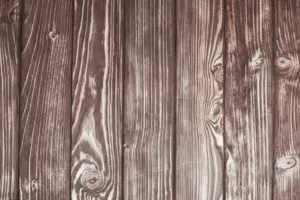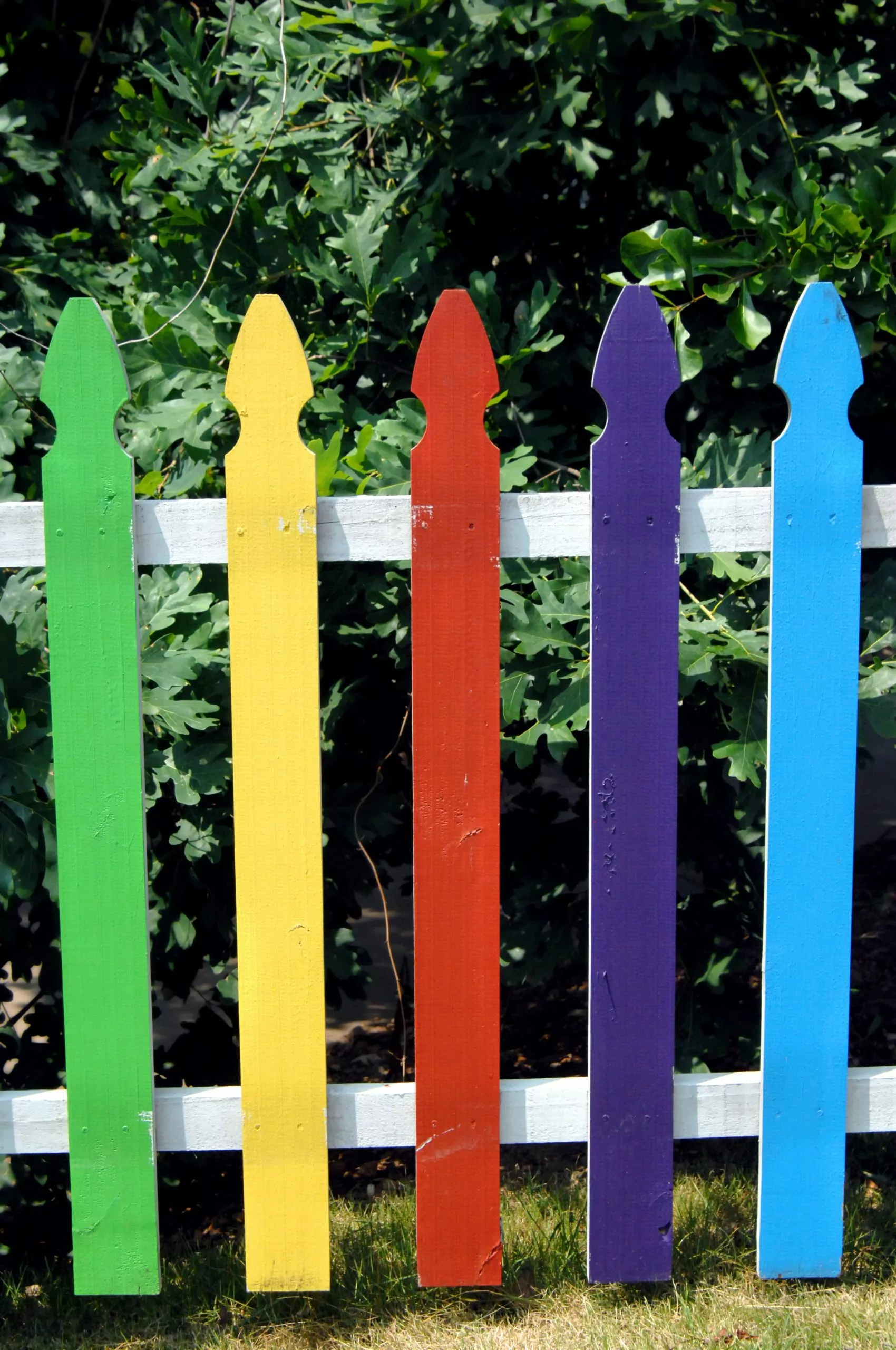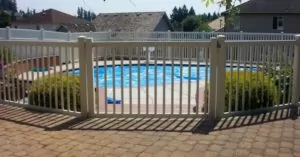Updated: August 2019
How To Stain A Fence Yourself
Let’s face it: Staining a fence can definitely seem like a daunting, tedious, and unappealing task. But it doesn’t have to be! Although it can be time-consuming depending on the size, shape, age, and condition of your wooden fence, it’s also one of the most rewarding chores that we undertake as homeowners and property owners.
Why? A newly stained and treated fence is beautiful to look at. And if it’s done right the first time, the work can last for a good long while. Not only will it look great, properly staining your fence can seal off the wood from the dangerous elements surrounding it. Staining a fence in Portland or Vancouver — or anywhere in the Pacific Northwest west of the Cascades, really — comes with its own peculiar challenges.

Staining A Fence In The Pacific Northwest
The number one enemy to a wooden fence is moisture, which leads inevitably to rot and decay if a wood fence is not properly treated. And as we all know, if there’s one thing we have plenty of in the great and beautiful Pacific Northwest, it’s moisture. For seven, eight, and sometimes nine months of the year, residents of western Oregon and Washington state have to pay close attention to their wooden fences. That’s because from (sometimes early) fall to (sometimes late) spring, the daily weather forecasts in these parts detail likely rain showers.
If we as homeowners can treat and stain our fences ourselves, we can help keep all that moisture out of the wood. If you have any questions about the process we’ve outlined below on how to stain a fence or questions about any of these staining tips, please don’t hesitate to contact Pacific Fence & Wire.
Staining A Fence In Portland And Vancouver
Here are some tips to make staining your fence in Portland, Vancouver, and elsewhere in the wet and wild PNW a breeze. Follow these guidelines to help stain a wood fence and to keep your fence protected in the elements so that you will be able to enjoy your fence for years to come.
Materials for staining a fence
Please note: This is not a comprehensive list; your needs may vary. But the website of the legendary Bob Vila says you’ll definitely need at least the following:
- Stiff bristle brushes (invest in a high-quality, 3-inch to 4-inch brush and a smaller 1-inch brush for tight spaces
- Garden hose with high-pressure spray nozzle (or a power washer)
- Bucket
- Bleach
- Rubber gloves
- Wood stain stripper
- Painter’s tape
- Drop cloth
- Natural bristle paintbrush
- Oil-based wood stain
- Clear outdoor wood sealant
Vila’s site also recommends waiting for the right weather before beginning work, which in Portland and Vancouver usually means waiting until after July 4: “Select a day with temperatures between 50 and 80 degrees, low to moderate humidity, and no precipitation expected for the next 24 hours.” This is because wet and/or cold weather means a longer drying time. (Conversely, if it’s too hot, this can also cause problems.)
10 Steps For Staining A Fence
1. First and foremost, research the stain you’re planning to use to ensure it can withstand the elements in your area.
2. Clean the fence thoroughly with a high-pressure hose before applying any stain. Allow sufficient time for it to dry after cleaning. The idea is to keep moisture out, not lock it in!
3. Bleach away mold or mildew, if any.
4. Strip or sand the fence surface, if necessary.
5. Use a tarp or painter’s tape to cover any areas that you don’t want to be stained.
6. Place a drop cloth beneath the fence to protect grass and plants.
7. Work left to right and top to bottom while maintaining a wet brush throughout.
8. Work on one section at a time and make sure you get the bottom and top of the fence since those are the places where moisture is most likely to seep in.
9. Apply sealant. Although not absolutely necessary, a good sealant atop the stain will prolong the finish and the life of the fence.
10. Take your time. Depending on the length of your fence, the process might take more than one day. Listen to your body and rest as appropriate! Remember to drink lots of water, especially if it’s hot outside.
Pacific Fence & Wire Co.
At Pacific Fence & Wire Co., we’ve been at it for a very long time now — almost 100 years! We started way back in 1921 — when Warren G. Harding was president and the population of Portland, Oregon, was just 258,000! We’re now a fourth-generation business, and we remain family-owned and operated.
We work on projects big and small, and it’s our goal on every job to provide quality work at affordable prices while consistently delivering the personalized touch that our longtime customers have learned to expect.
We’re the best, we plan to keep it that way. Call Pacific Fence & Wire today and see what we can do for you. There’s a lot to choose from — everything from custom orders and prefabricated products to custom enclosures and security fences. We’ll get the job done and get it done right — and make sure you’re 100% satisfied.
Portland (and Vancouver for that matter) has a lot more people now than it did in 1921. That means a lot more fences! So we expect to continue to grow and serve the people of this region with the best in fence installation and fence products.
Please contact us with any questions or comments.





